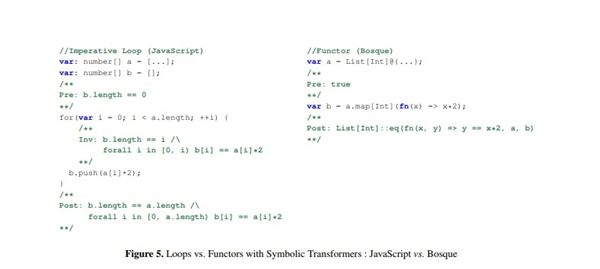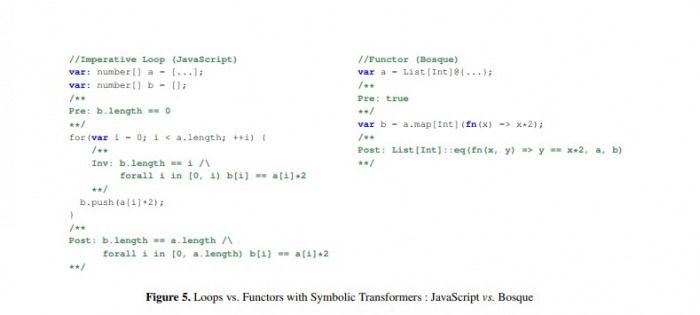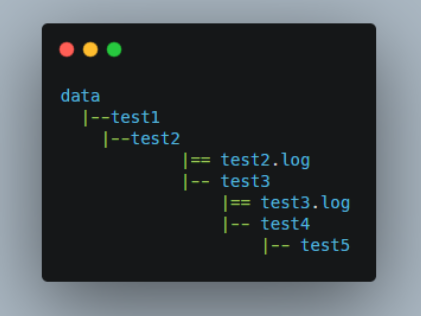提供Java缓存系统设计与实践经验:构建稳定可靠的缓存机制
 发布于2024-11-23 阅读(0)
发布于2024-11-23 阅读(0)
扫一扫,手机访问
构建可靠的缓存系统:Java缓存机制的设计与实践经验分享
引言:
在大多数的应用程序中,数据缓存是提高系统性能的一种常见方法。通过缓存,可以减少对底层数据源的访问,从而显著缩短应用程序的响应时间。在Java中,我们可以采用多种方式实现缓存机制,本文将介绍一些常见的缓存设计模式和实践经验,并提供具体的代码示例。
一、缓存设计模式:
- 基于内存的缓存
基于内存的缓存是最常见的一种缓存设计模式。它将数据存储在内存中,以便在应用程序需要时快速获取,通常使用HashMap或ConcurrentHashMap来实现。下面是一个简单的基于内存的缓存示例:
import java.util.HashMap;
import java.util.Map;
import java.util.concurrent.TimeUnit;
public class InMemoryCache<T> {
private final Map<String, CacheEntry<T>> cache;
private final long expirationTime;
private static class CacheEntry<T> {
private final T value;
private final long createTime;
CacheEntry(T value) {
this.value = value;
this.createTime = System.currentTimeMillis();
}
boolean isExpired(long expirationTime) {
return System.currentTimeMillis() - createTime > expirationTime;
}
}
public InMemoryCache(long expirationTime) {
this.cache = new HashMap<>();
this.expirationTime = expirationTime;
}
public void put(String key, T value) {
cache.put(key, new CacheEntry<>(value));
}
public T get(String key) {
CacheEntry<T> entry = cache.get(key);
if (entry != null && !entry.isExpired(expirationTime)) {
return entry.value;
} else {
cache.remove(key);
return null;
}
}
public static void main(String[] args) {
InMemoryCache<String> cache = new InMemoryCache<>(TimeUnit.MINUTES.toMillis(30));
cache.put("key1", "value1");
String value = cache.get("key1");
System.out.println(value);
}
}- 基于磁盘的缓存
基于磁盘的缓存将数据存储在磁盘文件中,以便在应用程序需要时进行读取。这种缓存设计模式适用于较大的数据集,但相对于基于内存的缓存,读取速度较慢。下面是一个简单的基于磁盘的缓存示例:
import java.io.*;
import java.util.HashMap;
import java.util.Map;
public class DiskCache<T> {
private final Map<String, File> cache;
public DiskCache() {
this.cache = new HashMap<>();
}
public void put(String key, T value) {
try {
File file = new File("cache/" + key + ".bin");
ObjectOutputStream outputStream = new ObjectOutputStream(new FileOutputStream(file));
outputStream.writeObject(value);
outputStream.close();
cache.put(key, file);
} catch (IOException e) {
e.printStackTrace();
}
}
public T get(String key) {
File file = cache.get(key);
if (file != null && file.exists()) {
try {
ObjectInputStream inputStream = new ObjectInputStream(new FileInputStream(file));
T value = (T) inputStream.readObject();
inputStream.close();
return value;
} catch (IOException | ClassNotFoundException e) {
e.printStackTrace();
}
}
cache.remove(key);
return null;
}
public static void main(String[] args) {
DiskCache<String> cache = new DiskCache<>();
cache.put("key1", "value1");
String value = cache.get("key1");
System.out.println(value);
}
}二、缓存实践经验:
- 缓存策略的选择
在选择缓存策略时,需要综合考虑缓存的大小、数据的生命周期以及应用程序对数据的访问模式。对于频繁访问且容量较小的数据,可以选择基于内存的缓存;对于容量较大的数据集,可以使用基于磁盘的缓存。 - 缓存清理和过期处理
为了防止缓存数据过期,需要定期进行缓存清理和过期处理。可以根据缓存的大小和容量设置过期时间,或者使用淘汰策略(如最近最少使用)进行数据清理。 - 缓存的分布式处理
在分布式系统中,多个节点共享缓存数据时需要考虑缓存数据的一致性。可以使用分布式缓存系统(如Redis)来实现缓存的分布式处理,保证数据的一致性。
三、结论:
通过合理设计和使用缓存机制,可以显著提高应用程序的性能和响应速度。在构建可靠缓存系统时,选择合适的缓存策略,定期进行缓存清理和过期处理,并考虑分布式缓存的一致性。本文提供了基于内存和磁盘的缓存设计模式的具体代码示例,希望对读者构建可靠的缓存系统有所帮助。
参考文献:
- Javatpoint. (2019). Java Cache. https://www.javatpoint.com/java-cache
- Baeldung. (2021). Spring Caching with Redis. https://www.baeldung.com/spring-data-redis-cache
产品推荐
-

售后无忧
立即购买>- DAEMON Tools Lite 10【序列号终身授权 + 中文版 + Win】
-
¥150.00
office旗舰店
-

售后无忧
立即购买>- DAEMON Tools Ultra 5【序列号终身授权 + 中文版 + Win】
-
¥198.00
office旗舰店
-

售后无忧
立即购买>- DAEMON Tools Pro 8【序列号终身授权 + 中文版 + Win】
-
¥189.00
office旗舰店
-

售后无忧
立即购买>- CorelDRAW X8 简体中文【标准版 + Win】
-
¥1788.00
office旗舰店
-
正版软件
- 深入了解:Django框架的定义和特点
- Django框架是一种用于Web应用程序的Python框架,它提供了一个简单而强大的方式来创建Web应用程序。事实上,Django已经成为当前最受欢迎的PythonWeb开发框架之一,也成为很多公司的首选,包括Instagram和Pinterest。本文将深入探讨Django框架是什么,包括基础概念和重要组件,以及具体代码示例。Django基础概念Djan
- 3分钟前 框架 django 探讨 0
-
正版软件
- Nginx安装期间的安全最佳操作
- Nginx是目前最流行的Web服务器之一,由于其高效、稳定和安全性,成为了许多网站和公司首选。尽管Nginx自身有良好的安全特性,但是在安装和配置时,我们仍需谨慎并采取一些安全实践。安装前的准备工作在开始安装Nginx之前,需要仔细考虑以下几点:版本选择:选择最新版本的软件能够提供更好的安全保障,同时,因为新版本通常包含安全漏洞修复,这能够防止一些已知的攻击
- 18分钟前 安装 nginx 安全实践 0
-
正版软件
- 分析SpringCloud和SpringBoot的区别和用途场景
- SpringCloud与SpringBoot的区别及应用场景分析随着云计算和微服务架构的流行,SpringCloud和SpringBoot作为Java开发领域最受欢迎的框架,也成为了许多开发者的首选。然而,很多人容易混淆这两者之间的区别,无法准确地区分它们的应用场景。本文将对SpringCloud和SpringBoot进行详细分析,并结合具体代码示例,帮助读
- 33分钟前 0
-
正版软件
- 优化静态资源更新,配置Nginx缓存清理
- Nginx缓存清理配置,优化网站静态资源更新引言:在网站开发过程中,经常会有静态资源的更新,如CSS、JavaScript和图片等。然而,由于浏览器的缓存机制,访问者可能无法立即获取到最新版本的静态资源。为了解决这个问题,我们可以使用Nginx进行缓存清理配置,以优化网站静态资源的更新。一、Nginx缓存配置首先,我们需要在Nginx的配置文件nginx.c
- 48分钟前 ) Nginx缓存清理配置 ) 网站静态资源更新 ) 优化网站性能 0
-
正版软件
- 企业级应用开发中的应用与实践:探索Spring框架
- Spring框架在企业级应用开发中的应用与实践引言:随着信息技术的不断发展,企业级应用开发变得越来越复杂。为了加快开发速度、提高系统稳定性和可扩展性,开发人员需要借助一些优秀的开发框架。Spring框架作为一个开源的轻量级应用开发框架,经过多年的发展已经广泛应用于企业级应用开发中。本文将介绍Spring框架在企业级应用开发中的应用与实践,并提供一些具体的代码
- 1小时前 10:30 Spring 实践 企业级应用 0
最新发布
-
 1
1
-
 2
2
-
3
- Vue组件中如何处理图片预览和缩放问题
- 402天前
-
 4
4
- Python实战教程:批量转换多种音乐格式
- 573天前
-
5
- WebSocket协议的优势与劣势分析
- 403天前
-
 6
6
-
7
- java动态代理实例代码分析
- 573天前
-
 8
8
-
 9
9
- java io文件操作删除文件或文件夹的方法
- 570天前
相关推荐
热门关注
-

- Xshell 6 简体中文
- ¥899.00-¥1149.00
-

- DaVinci Resolve Studio 16 简体中文
- ¥2550.00-¥2550.00
-

- Camtasia 2019 简体中文
- ¥689.00-¥689.00
-

- Luminar 3 简体中文
- ¥288.00-¥288.00
-

- Apowersoft 录屏王 简体中文
- ¥129.00-¥339.00